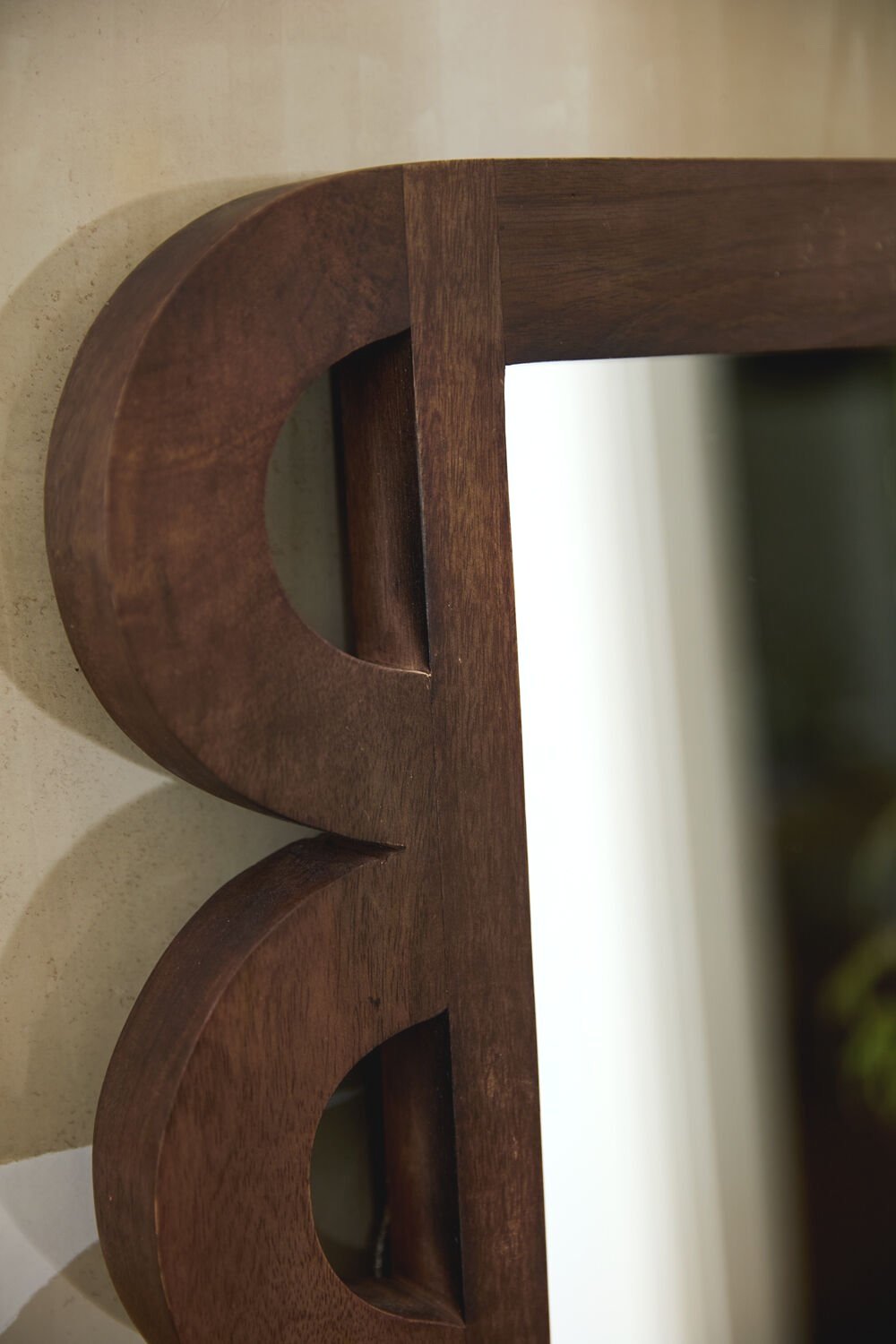Additional Details
Single mirror
Color: Walnut
Weight: 12 lbs
Material: Mango Wood
Dimensions: 20.0” x 1.5” x 32.0”
Made to order
Ships within the continental US in 3-4 weeks
Details
Create an artful, functional home decor scene with the Dwa Mirror. Made from mango wood with a dark chocolate stain, this tall rectangular mirror features scalloped trim on the vertical edges reminiscent of the rounded side supports of the traditional Asante stool. Whether leaned against a wall or hung with the securely-attached metal wire in the back, the Dwa Mirror is an eye-catching moment of culture with a functional twist.
Editors' Note
Dwa are the traditional stools of the Asante people of Ghana, part of the Akan language group. Stools are an especially important element of Asante culture, having a variety of ceremonial, ritual and political purposes. This is especially true of the Sika Dwa — the Golden Stool — which represents the office of the Asantehene, king of the Asante nation. There are a variety of dwa types, each with their own significance and decorated according to the rank of the owner. Several design types are reserved for the Asantehene alone, while mmaa dwa and mmarima dwa are stools created for women and men, respectively. Some dwa feature a single, central support to the seat while others employ a series of pillars. Frequently, various motifs and designs are employed in the carving of this central section, often drawn from the Adinkra symbol set, imbuing any stool so decorated with meaning and wisdom. The semi-circular motif of the Dwa Mirror can be found on any number of stool types, but feature prominently on the kontonkurowi dwa — the Rainbow stool.
Details
Create an artful, functional home decor scene with the Dwa Mirror. Made from mango wood with a dark chocolate stain, this tall rectangular mirror features scalloped trim on the vertical edges reminiscent of the rounded side supports of the traditional Asante stool. Whether leaned against a wall or hung with the securely-attached metal wire in the back, the Dwa Mirror is an eye-catching moment of culture with a functional twist.
Editors' Note
Dwa are the traditional stools of the Asante people of Ghana, part of the Akan language group. Stools are an especially important element of Asante culture, having a variety of ceremonial, ritual and political purposes. This is especially true of the Sika Dwa — the Golden Stool — which represents the office of the Asantehene, king of the Asante nation. There are a variety of dwa types, each with their own significance and decorated according to the rank of the owner. Several design types are reserved for the Asantehene alone, while mmaa dwa and mmarima dwa are stools created for women and men, respectively. Some dwa feature a single, central support to the seat while others employ a series of pillars. Frequently, various motifs and designs are employed in the carving of this central section, often drawn from the Adinkra symbol set, imbuing any stool so decorated with meaning and wisdom. The semi-circular motif of the Dwa Mirror can be found on any number of stool types, but feature prominently on the kontonkurowi dwa — the Rainbow stool.

Single mirror
Color: Walnut
Weight: 12 lbs
Material: Mango Wood
Dimensions: 20.0” x 1.5” x 32.0”
Made to order
Ships within the continental US in 3-4 weeks